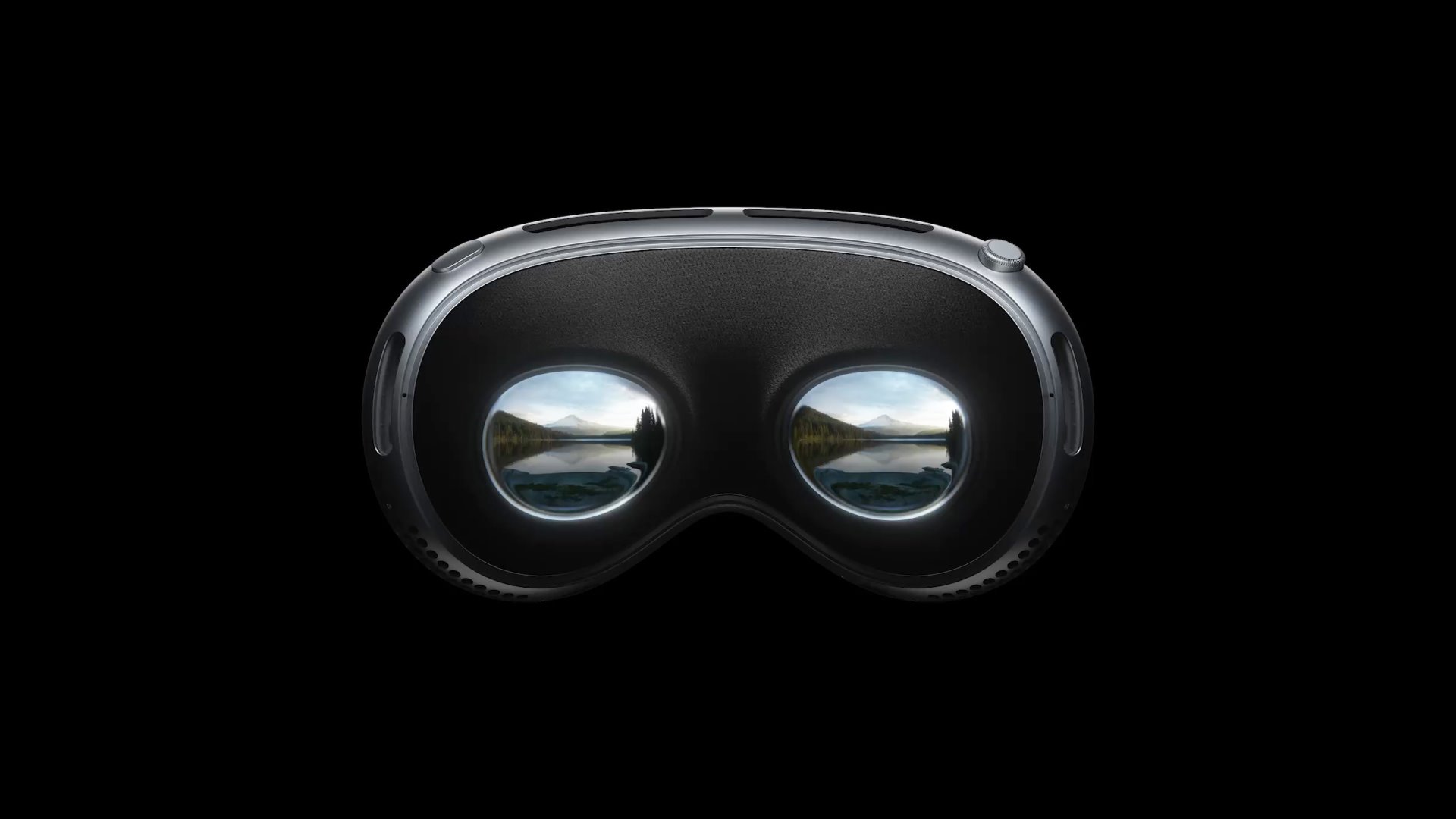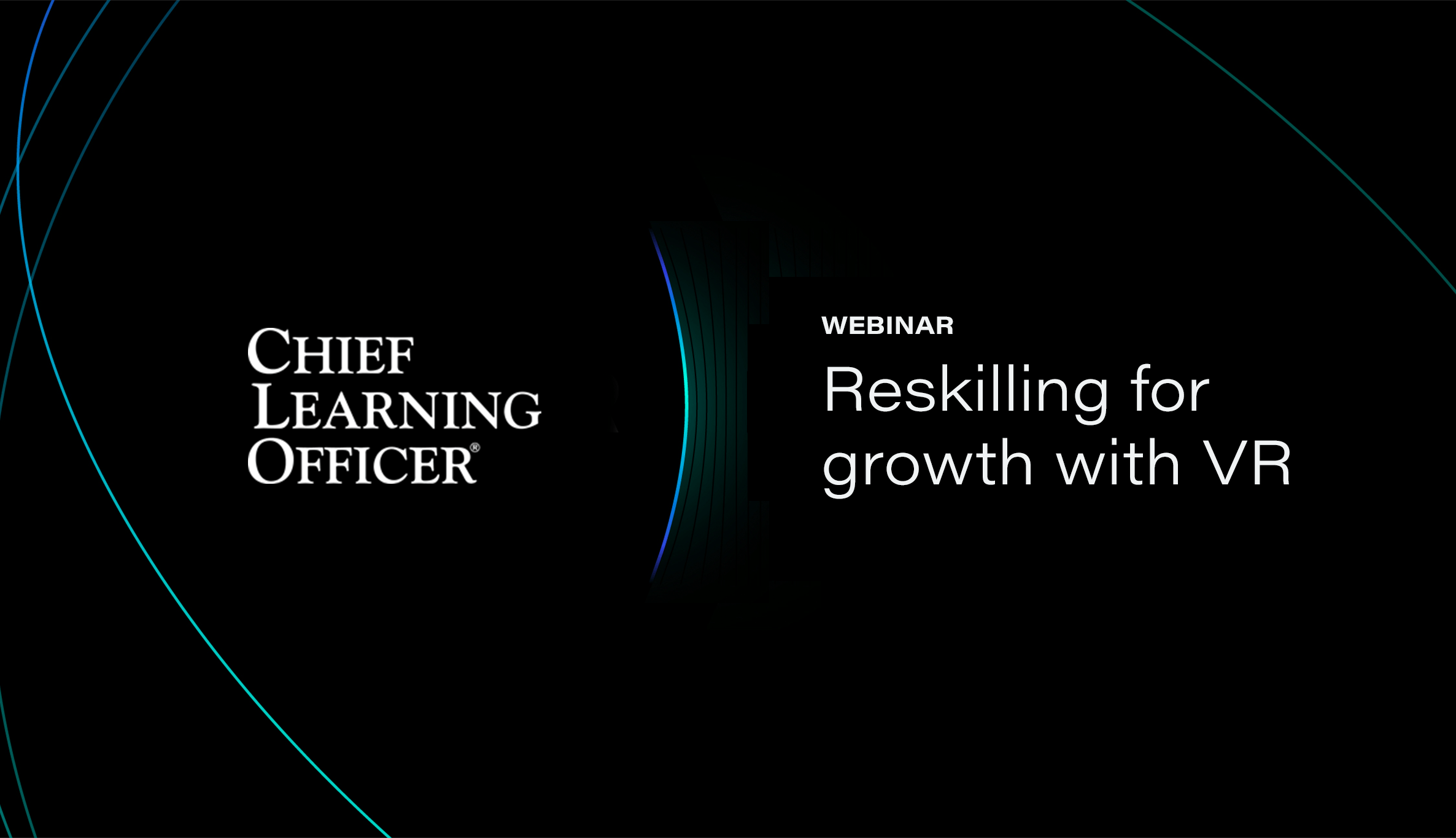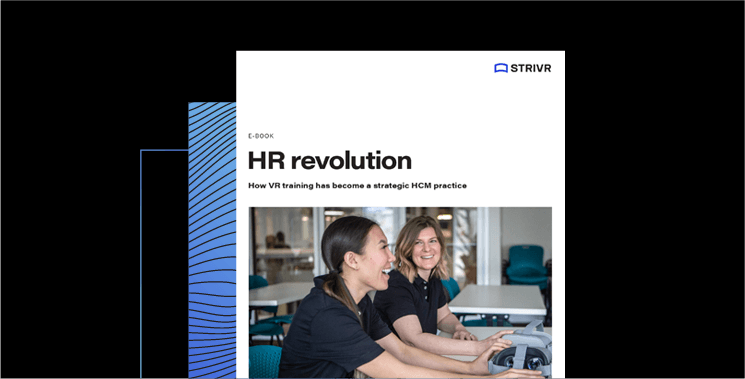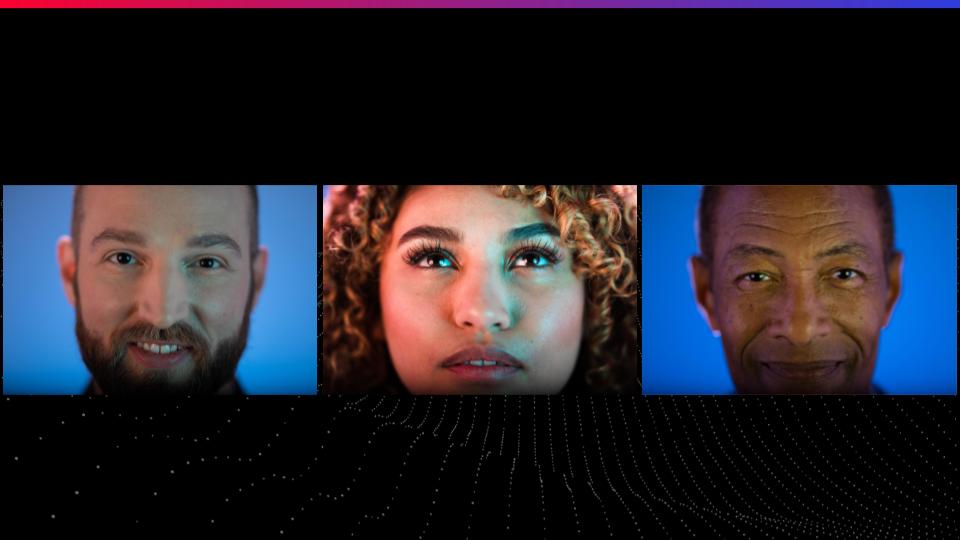Your people invest in your company every day by showing up for work and contributing to your organization. In order to retain talent, you have to invest in them as well and provide compelling opportunities for career growth.
That used to mean simply offering training programs and a potential for “upward mobility” to employees. But learning and development has transformed remarkably over the last few decades. In fact, I recently hosted a webinar panel on CLO Magazine, featuring thought leaders from Bank of America and Strivr, where we discuss this very real transformation. You can see the recording here.
Webinar: Reskilling for growth with VR
First, classroom-based training became online training, then online training became largely mobile learning. The next generation of the workforce, which has grown up immersed in video games and technology, isn’t interested in just traditional training modalities. They expect to learn and interact in a digital world, and if a prospective employer doesn’t offer innovative learning opportunities, it very well might mean an inability to compete for talent. This brings us to an inflection point.
If we tap into the bounty of technology that’s now available, we’re poised to transform the way learning is consumed and delivered. And how organizations learn will determine whether they rise to the occasion and adapt, or struggle behind outdated practices and programs. We’re in an era of dynamic change, and witnessing what’s likely to be one of the biggest evolutions for the learning and development profession.
Learning should be experienced
People crave experiences. I can tell you how to do something, but when I show you — and involve you in doing it — there’s a much bigger impact on learning effectiveness and knowledge retention. We’ve always known this, and that’s why we often strive to create learning experiences that are as hands-on as possible.
In one industry, that might mean learners shadowing experienced workers. In another, the best “teachers”might be flown to various office locations, or numerous employees might travel to a centralized site. These may have been effective ways to learn in the past, but also are expensive, hard to scale, and inconvenient.
It would be much more effective if we could scale hands-on, on-the-job training, so that every employee could have an experienced “trainer” of their own, whenever they need it. The opportunities for deeper learning would be astounding.
Equity of access to more effective learning is now achievable
As remote work has become status quo, the velocity of evolution and innovation from a technological perspective has increased. As I explain in my book, Forward-Focused Learning, organizations that are proactive about ways to grow, build, and learn will turn to technologies that are innovative, aligned to business needs, and strategically positioned for future success.
This year we were all forced to turn to new ways of working, new processes and new technologies in response to a global pandemic. Although this may have been stressful, and many may have initially resisted the immense changes, we ultimately embraced our new realities and experiences. Think about the positive impact this has had on our organization’s ability to be resilient, adapt, and grow. We surprised ourselves with agility as well as our ability to build and learn… no matter the physical distance.
We’ve had to evolve through technology-our future will not look exactly like our past. Many don’t foresee us going back to in-office work environment as a daily norm. In fact, across the spectrum of employee ages and roles, we have learned to communicate, innovate, and transform the way we collaborate as well as contribute.
Within the constructs of this ‘new normal’, we want to create equity and accessibility for all employees within our organizations. To do this, we have to provide tools and technologies that enable remote access to learning for everyone, at any time.
For example, I see a very big opportunity for leaders to provide equity of access to L&D by giving employees a VR headset and engaging them with a realistic yet virtual experience wherever they are. That levels the playing field for employees; everyone can have the opportunity for growth and development no matter where they work or what level they are in the organization.
It’s time to hit fast-forward, and become a career-growth organization
There are many decision-makers with strong beliefs about the way to deliver learning, and for some there may be a mindset shift towards making a commitment to invest in new technologies. But now is the time to leverage change. Our employees have already proven they are ready to embrace new ways of working and learning.
Organizations that don’t innovate in L&D today will see the results of that apathy in their ability to execute and perform. Employee attrition and an inability to attract the best talent will hinder company success. Career-growth organizations will sustain high performance for the long haul and elevate their employment brand. They will be resilient, despite disruption.
This past year has given us an invitation to innovate. It’s time for us to leverage these positive changes and invest in the future of learning.





